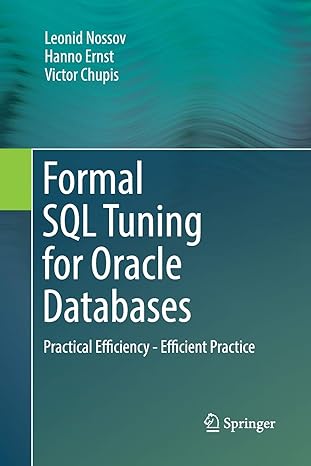Question
I haves code on bottom. what do i need to edit? Create a subdirectory called proj1 . For this project you need to create at
I haves code on bottom. what do i need to edit?
Create a subdirectory calledproj1.
For this project you need to create at least two files:proj1.cpp, andmakefile. Both files should be placed in theproj1directory.
The fileproj1.cppshould contain the main function,int main(). In the main() function, the program should read the input until it reaches the end, counting the number of times each word, number, and character is used. A word is defined as a sequence of letters ('a'..'z' or 'A'..'Z'). Words are case insensitive ("AA", "Aa", "aA", and "aa" are the same). A number is defined as a sequence of digits ('0'..'9'). Note that both words and numbers can be of length of 1, that is, contain one letter or one digit, respectively. Different sequences represent different numbers. For example, number "001" is different from number "1". Words are separated by numbers or other non-letter and non-digit characters. Numbers are separated by words or other non-letter and non-digit characters. Your program should record the number of times each word, number, and character happens (note that characters are case sensitive). The program should then output the ten most used characters (case sensitive), the ten most used numbers, and the ten most used words (case insensitive) as well as the number of times these characters/numbers/words are used. Since words are case insensitive, the program only outputs lower case words. The characters, numbers and words should be outputted in the descending order based on the number of times they are used. When two characters happen in the same number of times, the character with a smaller ASCII value should be considered as being used more frequently. When two words (numbers) happen in the same number of times, the word (number) that occurs earlier in the input should be considered as being used more frequently.
An example executable code of the program proj1.x is provided to you. In proj1.x, the output related to the display of characters, words, and numbers is aligned in the following manner: the width of the column of the characters, words, and numbers is the length of the longest words and numbers to be displayed, plus five (5). You should make the outputs of your program the same as those of 'proj1.x'. When printing characters, use '\t' for tab and ' ' for newline. All other characters should be outputted normally.
Write amakefilefor your project that compiles an executable calledproj1.x
You are encouraged to use any C++ STL containers and algorithms. You should also use C++ string class instead of the built-in string type.
Your program must be able to compile and run on linprog.
I have some code. What do I need to do to satisfy the requirements from my code include
int main() {
string s = "aaa"; bool g; char str[100]; char str1[100]; char str2 [100]; int charCount = 0; int c[100]; int num[100]; int numCount = 0; int p = 0; for (int i = 0; i < s.length(); i++) {
if (isalpha(s[i])) { str[i] = s[i]; for(int j = 0; j < s.length();j++) { // checks to see how many times the char appears if(str[i] == s[j]) { p++; } c[i] = p; p = 0; } cout << "Alpha: " << str[i] << " and shows " << c[i] << " times" << endl; }
else if (isdigit(s[i])) { str1[i] = s[i]; cout << "Number: " << str1[i] << endl; }
else { str2[i] = s[i]; cout <<"Char: " << str2[i] <<endl; } }
return 0; }
Step by Step Solution
There are 3 Steps involved in it
Step: 1

Get Instant Access to Expert-Tailored Solutions
See step-by-step solutions with expert insights and AI powered tools for academic success
Step: 2

Step: 3

Ace Your Homework with AI
Get the answers you need in no time with our AI-driven, step-by-step assistance
Get Started


